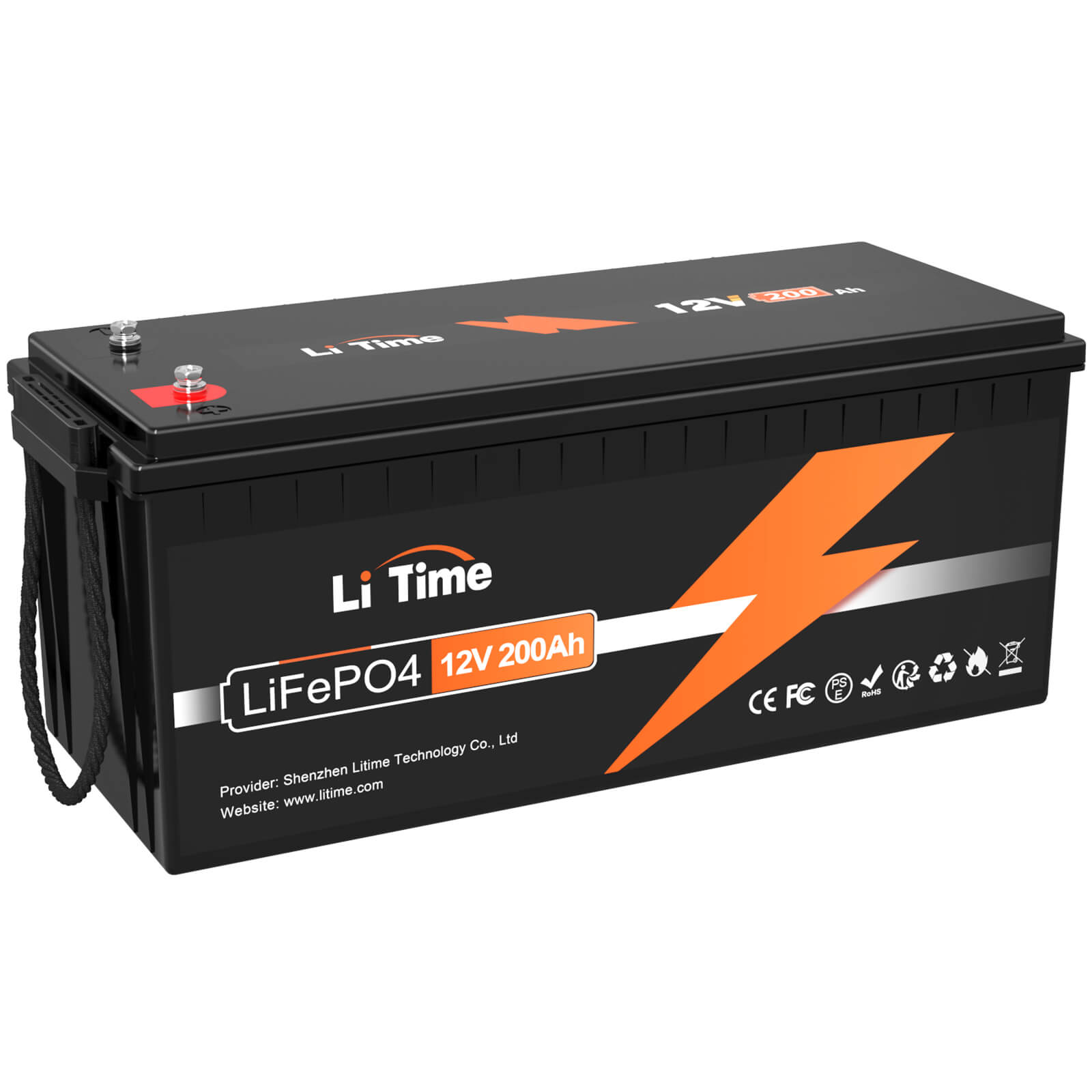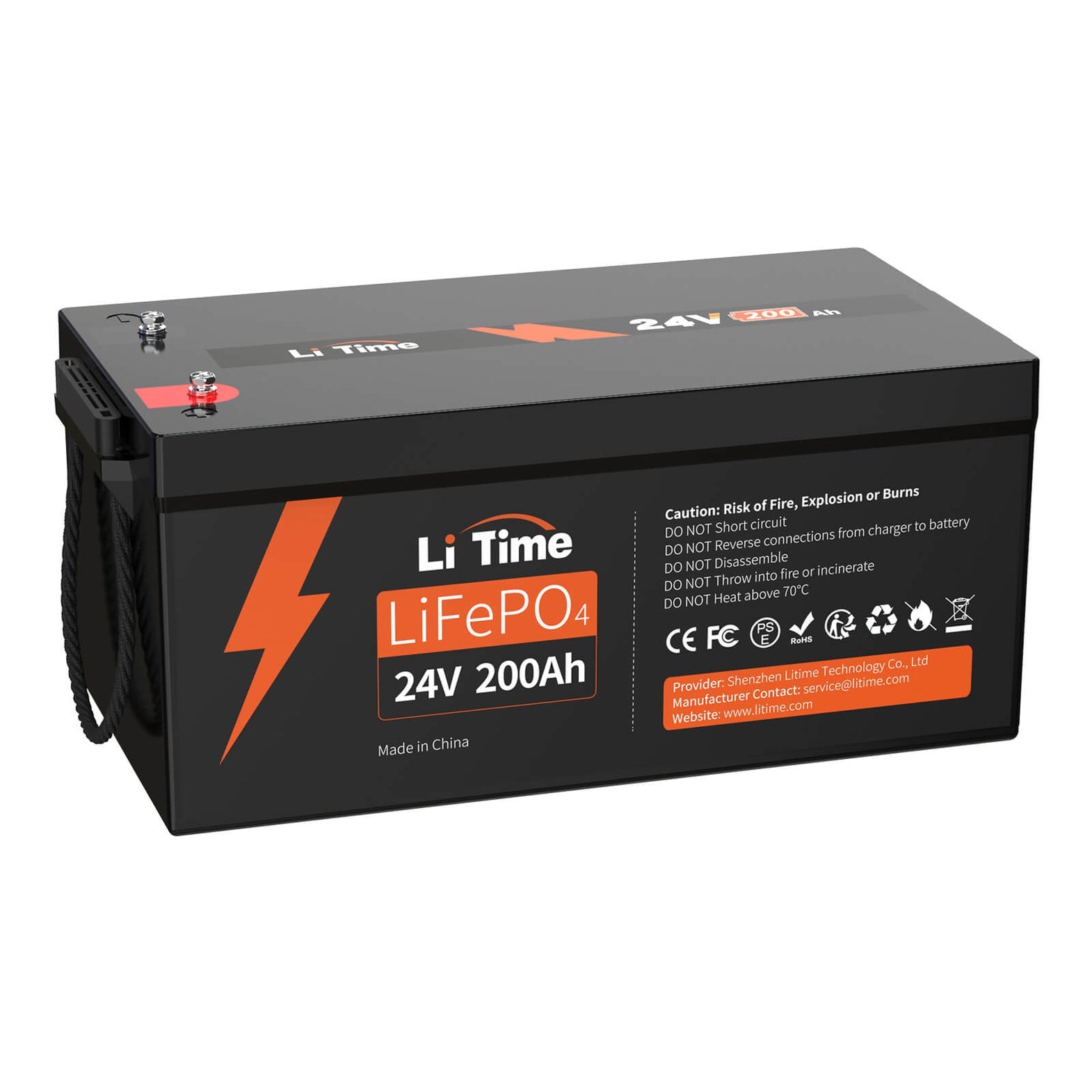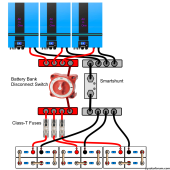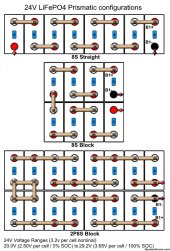Building your own battery packs is not hard, a lot of us do that here.
We always recomend that you use Native Voltage Batteries, ie 12, 24 or 48 V. Placing Lithium Based batteries in Series more often than not causes issues.
Using Battery Packs in Parallel increases your AH, the Fault tolerance by providing fallback in the event another pack in the "Bank" and in addition to that Packs within a Battery Bank divide & share both load & charge which reduces strain on the system
The rules for Paralleling Packs into a Bank are fairly simple.
Keep wires from Battery Terminals to Common DC Busbars the same length. Keep them together as much as possible.
Fuse each battery pack for the appropriate Amperage, taking into account possible Surge demand Handling.
They can be placed on Shelves, onto a Rack, or shelves, Do keep them off the ground. *Northerner Tip !
! Building a Battery Pack with Paralleled Cells within is generally NOT advised unless you can be certain that you have properly fully Matched & Batched cells (not just Voltage & IR matched as most vendors do). It is CRITICAL for a properly performing pack to have cells which have a consistent IR (Internal Resistance) throughout the entire "Working Voltage Range" otherwise paired - mismatched cells can & often do cause issues... Consider that in an EV, the cells MUST pbe perfectly matched, for a reason... There are some "geniuses" that argue otherwise, be cautious, they can make compelling hooey up & do so. See Voltage Charts Resource below.
FACTS to hang onto...
LFP has an Allowable Voltage which is from 2.500->3.650 Volts per cell. This is "the" voltage range where no harm/damage is caused. This is no different than any other battery chemistries "Allowable Voltage", od course every chemistry is a bit differewbt.
The "Working Voltage" range which is what every manufacturers tests & is responsible for delivering the Actual Specified AH, This Working Range is from 3.000-3.400 Volts per cells - The Flat Voltage Curve.
* Believe it or not, every degree Celsius does make a difference in how cells charge & discharge, as well as their SOC (slightly) and this is perfectly normal with this chemistry, LYFP & LMFP (both $$ variants) do not... FYI, those chemistries will "start" to become publicly available in Q2-2024. I spent 3 years doing various evaluations & tests while keeping the battery packs @ 10C, 15C, 20C, and with various "shelf" configurations. On average there was a 1.5C difference between each pack on a stacked shelf, with the lowest temp near the floor, this does have a negative effect which can be observed, as the battery packs will try to hold slightly different voltages. I now have 6 Packs in Parallel on one shelf @ 92cm above the floor. Battery packs performed better above 20C but below 10C, there is a noticeable decrease in AH, it does recover with temp however.
*-? My powerhouse is a hyper insulated structure with a frost protected slab foundation with R20 Foam Insulation.
BMS'. There are a great may of them out there, some good, many not bad and a few terribles. There is VAST experience here will all of those !
My suggestion is to use JKBMS with Active Balancing (Vendor below sells them as well as all other bits like Silicone wire). A general rule is 1A Active Balancing per 100AH of capacity.
CHARGE PROFILE:
Absorb/Bulk: 27.6 for 45 minutes (3.45vpc)
(some call this boost)
Equalize: OFF
Float 27.5V (3.437vpc)
MIn Volts: 21.2 (2.650vpc) (
Also a good cutoff for Inverter)
Max Volts: 28.6 (3.575vpc)
Rebulk Voltage: 25.6 (3.200vpc)
End Amps: (Allows for full Saturation at set Float Voltage, then as A drops to this point to trigger the transition to FLOAT mode.)
(*1): End Amps is calculated from the
LOWEST AH Battery Pack in a Bank. IE: (100AH X 0.05 = 5A 280AH X 0.05 = 14A.)
NB: EndAmps = TailCurrent. Different manufacturers use different terms for the same thing.
Here is a couple of my resources you will find handy.
Luyuan Tech Basic Lifepo4 Guide V1.0A
General LiFePO4 (LFP) Voltage to SOC charts/tables 12/24/48V
Known Good Reliable Vendor who does provide EVE Factory Tested Fully Matched & Batched cells and related equipment, including battery cases & more. They have an assembly service, of course at cost extra $.
Money Saving Tip: If you order everything from 1 Vendor, ie: cells, bms, wires etc, they add it into the other shipping boxes. There is a Min Fee per box + weight etc and that adds up really fast (shippers = gougers)
Shenzhen Luyuan Technology Co., Ltd., Experts in Manufacturing and Exporting Lifepo4 battery, LTO battery and 0 more Products.

szluyuan.en.alibaba.com
You did not mention if you are using an AIO or Component build, here are two of my Logical Drawings that may help as well. These examples show Battery Bank of 4x 12V/4S but same for all voltages up to 16S/48V.
View attachment 171323 View attachment 171324
Hope this information helps and answers several questions.
Good Luck from a Fellow Northerner. (ick, it is coming and won't be nice, hope your ready for it)











